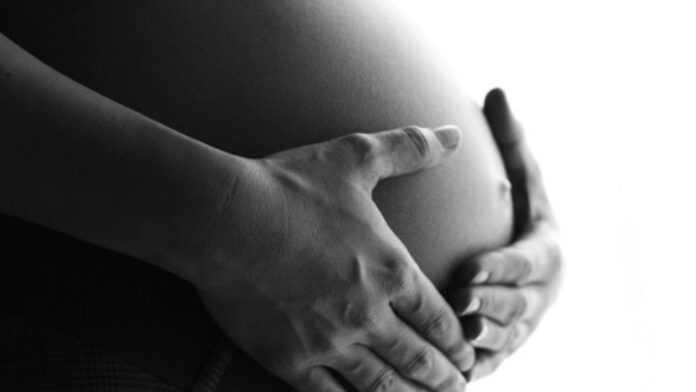
The architectural design of two newly built public maternity hospitals in Malawi, which has one of the world’s highest rates of women dying in childbirth, seeks to respect the human rights of birthing women and has had a significant impact on Malawi’s maternal health care system. Ill-designed government-run maternal health centers litter many poor countries and contribute to unacceptably high maternal death rates. There’s a pressing global need to design public maternity units that uphold the dignity of socially disadvantaged women.
By Tarek Meguid and Chi Mgbako
Architecture is not a neutral backdrop to our lives. The basic design of maternity hospitals can affirm or negate women’s rights and facilitate or impede more equitable power balances between patients and health workers.
For decades the design of Bottom Hospital, once the largest public maternity unit in Malawi’s capital city Lilongwe, adversely affected healthcare delivery to the country’s poorest pregnant women. British colonial rulers designed and built Bottom for the ‘native’ population, and the Malawian government under dictator Kamuzu Banda – supported by Western development aid – later updated the hospital but preserved its original blueprint. These elites’ condescending attitudes towards the poor were evident in Bottom’s inhumane design. The hospital was constructed with only one labor room, one operating room and one recovery room, depriving women of their rights to privacy, dignity, adequate healthcare and in many cases, their right to life.
Pregnant women were expected to give birth together in Bottom’s one labor room, sometimes underneath beds on the floor. Because of the lack of privacy in the labor room, birthing women were not allowed to have family members present for emotional support. Oceans of concerned relatives filled the grounds immediately outside the hospital, nervously awaiting news of their loved ones in a country where maternal mortality is a leading cause of death among women.
Dignity
With the hospital’s one operating room, mothers and babies routinely died preventable deaths waiting their turn for emergency obstetric care. Patients whose babies had died during delivery shared a post-op room with luckier women who cradled healthy babies in their arms. These realities ensured that women were treated without sensitivity or dignity and that their access to quality healthcare was compromised.
By denying women their rights to privacy, dignity and adequate healthcare, Bottom became a continuation of the injustices poor women faced in their everyday lives outside of the hospital, instead of a repudiation of those indignities. The building itself was abusive.
Architecture in a healthcare setting can also profoundly shape health workers’ experiences and attitudes. Bottom’s constricting design poisoned health workers’ relationships with patients. The health workers became desensitized to the daily scenes of patients birthing on the floor and dying from lack of emergency care. The environment did not allow women dignified births, and health workers began to view the women through this dehumanizing prism, often becoming abusive towards patients. Bottom’s dilapidated buildings and inhumane design also sent a discouraging message to health workers about the value of their services. Those who could move on to greener pastures often did, resulting in an even more desperate situation in the maternity hospital.
After years of advocacy, maternal health rights activists from Bottom Hospital won international and national funding and support to design and build the two new humane public maternity units in Lilongwe to replace Bottom.
Private rooms
The architectural design of the newly built Bwaila Hospital and Ethel Mutharika Maternity Wing at Kamuzu Central Hospital responds to the needs of birthing women. The hospitals are outfitted with multiple operating and recovery rooms, and all women, including the poor and disadvantaged, give birth in their own private delivery rooms – the first such public facilities in Africa.
The individual private rooms are large enough for patients to be accompanied by birth attendants, family members or partners, affording women the privacy and emotional support they need during delivery. The creation of individual private delivery rooms has led to the welcome engagement of fathers who have exhibited keen interest in participating in the birthing process.
The new facilities have also boosted health worker morale. The designers hoped the new maternity units would send a strong message to health workers about the value of their services, keeping them connected to their environment in a way that benefits mothers and babies.
One of the most important goals of the new maternity hospitals’ design was the creation of a humane space where women could lay claim to their power as patients. Because of Bottom’s poor design women were shown little respect and thus exhibited almost no agency. Even a newborn’s death did not prompt most mothers to ask questions or demand answers. This lack of agency often displayed by poor women in the healthcare context is the result of the oppressive and intimidating nature of the birthing experience in ill-designed government-run health centers in many poor countries.
Yet there has been a remarkable change in the confidence level of women giving birth in Lilongwe’s new public maternity hospitals. They are beginning to exhibit agency in the birthing process, asking questions and demanding answers, willing and able to fight for their rights as patients.
Although basic architectural design has the power to contribute to safe childbirth under conditions consistent with human dignity, it is not enough. The human tragedy hidden behind sterile maternal mortality statistics continues in Malawi and other countries struggling with the scourge of high maternal death rates. The biggest challenge in realizing maternal health rights is the implementation of already existing guidelines and roadmaps, as well as the development of new tools to facilitate patients’ agency. But a building, as a profound and functional expression of the respect for the human rights of poor women birthing in poor countries, is a bright, shining beginning.

